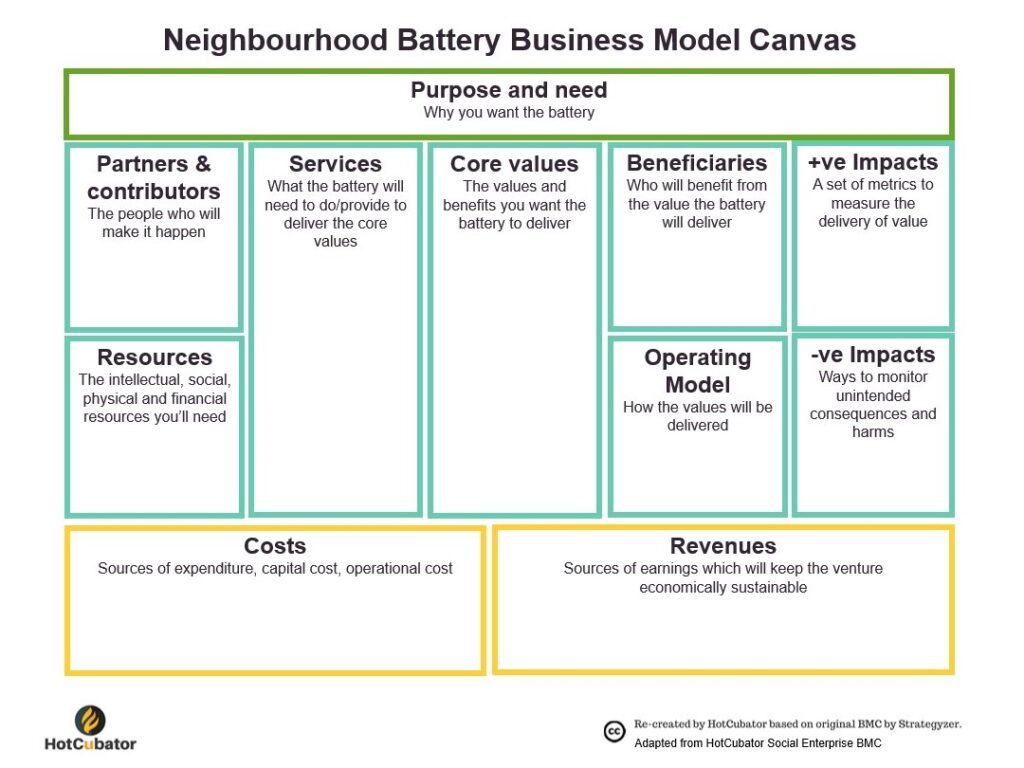A business model defines what a project is set up to deliver, to whom and how. For any organisation, and particularly for a social enterprise, a business model needs to start with clarity around who the beneficiaries are and what benefits they need or want. The process will clarify what resources, including expertise and labour you will need from in, and, outside your organisation, as well as what beneficiaries need to do or pay. This will start to tell you about the viability and sustainability of the project.
Note that this section is particularly aimed at community groups involved in community battery projects.
Below is a template for business model planning. It is adapted from Hotcubator’s social enterprise version of the original Business Model Canvas (Strategyzer). Use this template and the sections below to structure a planning process within your organisation or team. In your first iteration, you can develop a business model to test with partners and beneficiaries. It will be speculative and will have various assumptions that you’ll need to test. Creating a business model is generally an iterative process that involves building potential models, testing the assumptions that underpin them, and rebuilding them. This, together with feasibility testing (section below) leads on to developing a more detailed business plan.

The template distinguishes partners and contributors, who are needed to make the project happen, from beneficiaries, who benefit from it. In a conventional business model, these beneficiaries are customers. For neighbourhood batteries, this may not be a straightforward distinction, because partners in the neighbourhood battery will also be beneficiaries, and customers also help to make the battery work by exporting solar to it. Also, some of the beneficiaries include the environment, the climate and future generations. Keep these things in mind as you develop your model and change the template if you need.
